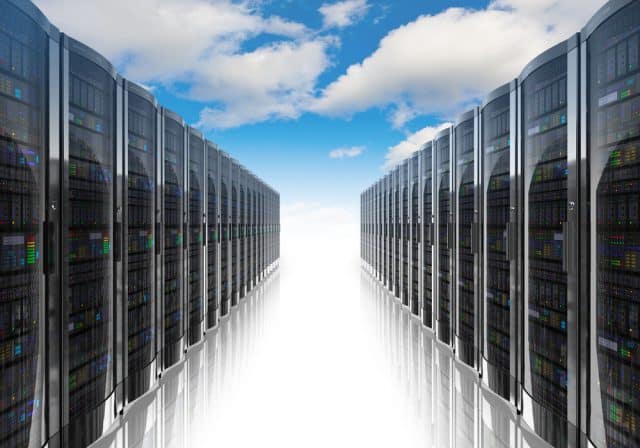Moving to the cloud? Don't forget the mainframe

Over the past decade, cloud technology has become the IT infrastructure of choice for many organizations. When the COVID-19 pandemic forced businesses to send workers home, cloud adoption accelerated, ensuring teams stayed connected and productive while working remotely. But in the rush to capitalize on the agile capabilities offered by cloud, larger enterprises should be wary of neglecting a critical piece of technology: the mainframe.
A majority of the world’s top banks, airlines, and retailers are estimated to rely on mainframes -- trusting them as a reliable and secure part of their IT infrastructure. Market appetite for future growth of the technology is strong: IBM recently reported 49 percent YOY growth in its mainframe division for Q1 2021.
However, many businesses fail to update their mainframe technology, resulting in it becoming difficult to maintain. Companies frequently resort to short sighted migration of mainframe applications as a result. Ensono’s research found 37 percent of companies have either migrated or retired up to 50 percent of workloads previously run on the mainframe.
Rule number one for mainframe: businesses need a strategy for the technology -- doing nothing is not the answer.
Indeed, for businesses seeking to make the most of their existing IT architecture, migrating the mainframe is not always the best choice. Through modernization, the mainframe can still prove to be a valuable component of a hybrid system, allowing enterprises to experience the benefits of both mainframe and cloud.
The value of mainframe
Mainframes are reliable and securable, providing the ideal home for business-critical and data-intensive workloads. The technology’s characteristics make it useful for the running of applications, from accounting and enterprise resource planning (ERP), through to customer relationship management (CRM) and data analytics. Mainframes are also adaptable, meaning they are great for scaling up computing capacity – a vital function during the pandemic as demand for online services has soared.
Mainframe technology has a long history. The original selling point of the predecessor to the modern mainframe, System 360, was that you wouldn’t need to re-write applications for future hardware releases. This was a huge cost-saving benefit initially, but it’s also why many client applications haven’t been modernized since the 60s.
Modernizing the mainframe
Mainframes provide multiple benefits. However, problems can start to outweigh advantages if businesses fail to update the technology. Without updates, mainframes become increasingly difficult for developers to work with. The longer the technology is left to stagnate, the more valuable data becomes trapped within the system.
Modernizing the mainframe makes it simpler to interact with and to understand. In turn, it becomes easier to find people with skills to maintain the technology. Indeed, new mainframe environments require fewer COBOL programmers, who are in critically short supply. With a modernized mainframe, developers can use new developer tools and program in new languages. Ultimately, this modernization process unlocks client data (that may have been largely inaccessible for decades) to start delivering value to the business at large.
Updating existing infrastructure also enhances cyber security, improving resilience in the face of increasingly advanced cyber criminals. Updates bring advantages such as automated security solutions and advanced vulnerability scanning. These help to keep the mainframe, and the critical business data it contains, secure.
Aligning with business strategy
There is no one-size-fits-all mainframe modernization solution. The strategy will look different from organization to organization. Currently, only 60 percent of IT leaders feel their mainframes are adequately meeting business needs. To take advantage of the value modernization can offer, the process needs to be fully aligned with an organization's business strategy.
This means incorporating the mainframe into broader business decisions and conducting a rigorous cost-benefit analysis to understand risks and opportunities. Rather than directing budget and resources towards short-term solutions for problems thought to be associated with the mainframe, it’s important that businesses build a long-term strategy with resources invested into comprehensive modernization.
Taking this approach will ensure businesses extract the most out of their mainframe technology, transforming it into a real engine for innovation and growth. In particular, modernization opens up data for business analytics, enabling the generation of insights that could differentiate a business from its competitors. With a modernized mainframe, businesses can also benefit from increased agility that will help meet rapidly evolving end-user expectations.
Mainframe modernization: the broader picture
Businesses need not make a binary choice between modernization and migration. Gartner predicts a 23.1 percent increase in public cloud spending in 2021. Yet, at the same time, Ensono’s research found 84 percent of IT leaders are currently using between one and four mainframes, with 16 percent running over five. Through mainframe modernization, businesses can avoid the risk of a wholesale shift to the cloud and create a platform for hybrid infrastructure.
Whatever a business’ plans are for the mainframe, a clearly defined strategy is essential. Even if the ultimate goal is to decommission the technology, modernization is still worthwhile as it will significantly reduce the complexity of future decommissioning or migration exercises. Regardless of what a business wants to get out of its mainframe, modernization is key to ensuring the technology stack doesn’t get stuck in the past. The right modernization strategy will enable the mainframe to become a core part of an organization's digital transformation journey.
Image credit: Oleksiy Mark / Shutterstock

Claire Connor is a Mainframe Solution Architect at Ensono